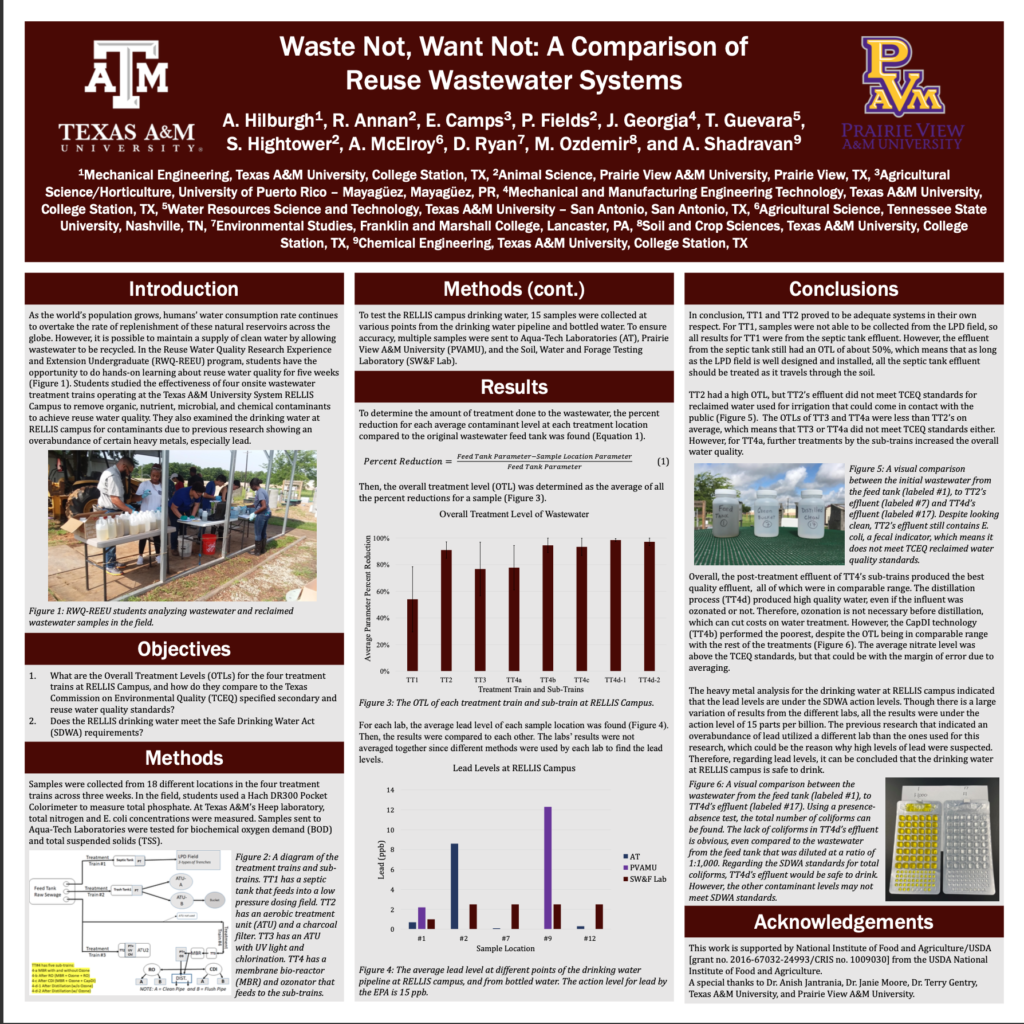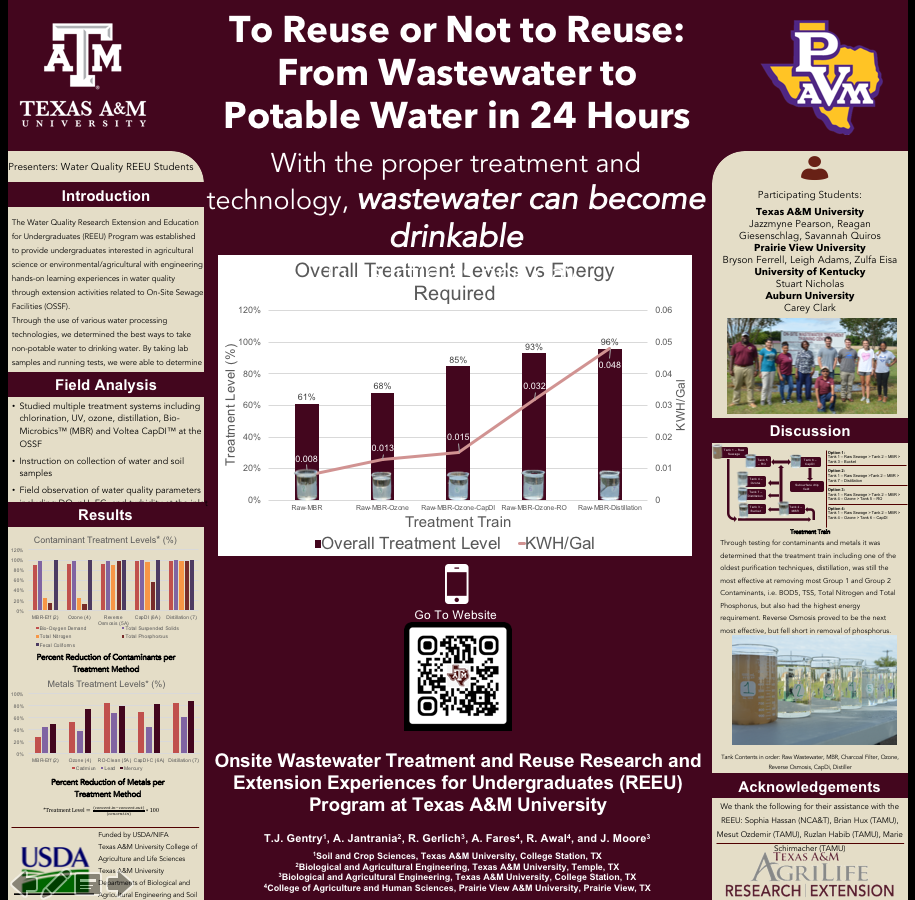2022 Final Poster Presentation
2021 Final Poster Presentation

2019 Final Poster Presentation

2018 Cohort Presentations
Team 1: Emily Fauver, Nikko Baez, and Camryn Davis
Project Title: Assessment of Membrane Bioreactor for Bacteria & Nitrogen Reduction
Several measurements were taken from different types of water systems that are designed to clean waste water in order to determine the quality of the effluent product from the OSSF. The students measured the effluents in the field using a variety of meter including dissolved oxygen, pH, conductivity, chloride, and nitrate. The students performed laboratory tests including total coliforms, E. coli, turbidity, chloride, and TKN. The students studied the treatment performance of aerobic and anaerobic wastewater treatment technologies to determine safe applications for water reuse.
Team 2: Donovan Davis, Morgan Green, Cathering Nguyen, and Donavan Thomas
Project Title: Bacteria Reduction Through Bucket Soil Treatment
Bucket and soil systems are uniquely advantageous for use in isolated environments lacking reliable access to electricity or chemical resupply. Each can function independently without human involvement. Soil systems are well-adapted to processing large volumes of raw wastewater where immediate reuse is not a priority. In other cases where the production of safe drinking water is imperative, such as disaster relief situations, bucket systems are useful as self-contained processing units that require no additional energy source to operate.
Bacteria Reduction through Bucket and Soil Treament
Team 3: Claire Barber, Dora Marin, Eriel Taylor, and Khadyajah Jenkins
Project Title: Data Analysis of Cap DI Treatment Through Comparison of MBR and Cap-DI In The Amount of Reduced Nitrogen
Wastewater has compounds such as salts and nitrates that dissolve and form charged ions. Cap DI © consists of two porous electrodes that the water travels between during the purification step. These electrodes are oppositely charged: one is positive while the other is negative. This causes the charged ions in the water to become attracted to the electrodes of opposite charge and attach to them. Once the water is purified and released into a “clean” tank, the machine will go through a regeneration step. During this step, the electrodes polarity is reversed, causing the ions that were attached to the electrodes to be discharged into the water that is flushing through the cell. This flush water is then expelled into a “dirty” water tank. Tank 2 at the RELLIS campus is named MBR, which stands for Bio-microbics Membrane Bioreactor. Raw wastewater travels from tank 1 to tank 2 and subsequently tank 5, Cap DI. MBR tanks operate through two processes: biological degradation and membrane separation. During the biological degradation process, the wastewater is treated through a suspended growth biological treatment method which is usually activated sludge. Thus, the goal of this research was to compare the levels of Reduced Nitrogen between tanks 2 and 5.
Team 4: Kira Christian, Lauren Hayes, and Houston Johnson
Project Title: Assessment of Ozone Disinfection for Bacteria Reduction
Due to the importance of this emerging method of disinfecting wastewater, our research on this cutting edge technology has been paramount. The ozone generator that is used at the Rellis Campus is manufactured by Aerobic Guard LLC, which is located in Waxahachie, TX. The device is very low-maintenance and can be customized and upgraded.
Assessment of Ozone Disinfection for Bacteria Reduction